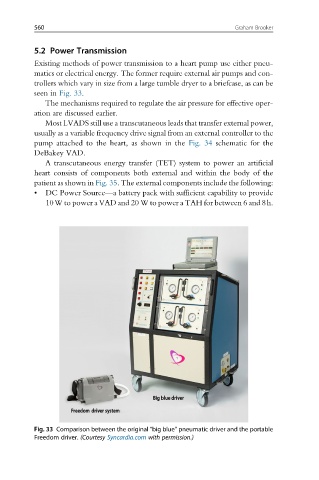Page 567 - Handbook of Biomechatronics
P. 567
560 Graham Brooker
5.2 Power Transmission
Existing methods of power transmission to a heart pump use either pneu-
matics or electrical energy. The former require external air pumps and con-
trollers which vary in size from a large tumble dryer to a briefcase, as can be
seen in Fig. 33.
The mechanisms required to regulate the air pressure for effective oper-
ation are discussed earlier.
Most LVADS still use a transcutaneous leads that transfer external power,
usually as a variable frequency drive signal from an external controller to the
pump attached to the heart, as shown in the Fig. 34 schematic for the
DeBakey VAD.
A transcutaneous energy transfer (TET) system to power an artificial
heart consists of components both external and within the body of the
patient as shown in Fig. 35. The external components include the following:
• DC Power Source—a battery pack with sufficient capability to provide
10W to power a VAD and 20 W to power a TAH for between 6 and 8h.
Fig. 33 Comparison between the original “big blue” pneumatic driver and the portable
Freedom driver. (Courtesy Syncardia.com with permission.)

